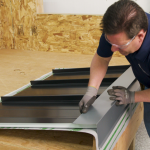6 Reasons Your Oven Is Not Heating Properly

Few things are more frustrating than an oven that refuses to cooperate just when dinner is on the line. One moment you’re set on a golden roast or a tray of biscuits, and the next you’re staring at a lukewarm disappointment.
Whether it’s sluggish preheating, uneven cooking, or a total failure to ignite, oven problems can derail even the simplest recipe. Fortunately, most issues are easier to fix than you might think.
Here are six common reasons your oven may be acting up—and how to fix them.
Power Supply Issues
Before blaming your oven, start with the basics. If your electric oven isn’t heating, make sure it’s firmly plugged into a working outlet and getting the power it needs to function.
You can test the socket by plugging in another kitchen appliance, like a toaster. If it browns the bread while your oven remains cold, you’ll know where the problem is.
Next, head to your switchboard. A tripped circuit breaker is quite often the culprit. Look for any switches sitting midway or out of line with the others. Resetting it might be all you need. If the breaker keeps tripping, though, that signals a deeper electrical fault.
Restoring power often gets the oven working again, but remember, if you’re not comfortable with electrical checks, call a licensed electrician. Safety always comes before supper.
A Worn or Damaged Door Seal
Heat loss can be just as frustrating as no heat at all, and a worn door seal is a common offender. Cracks, gaps, or grease build-up prevent the door from closing properly, letting hot air escape. That means longer cooking times, uneven results, and rising energy bills.
Start with a quick test by closing the door on a sheet of paper, and see if you can pull it out easily. If that’s the case, then the seal isn’t tight enough and should be replaced.
Luckily, replacement door-gaskets are widely available and often relatively low-cost at Aussie hardware or appliance stores. Replacing one yourself can make a noticeable difference to your oven’s performance.
From time to time, it’s advisable to call in expert oven cleaning services. They’ll not only tackle stubborn build-up around the seal, but also check other spots where heat can escape.
Faulty Heating Elements
You must have noticed the glowing bars that do the heavy lifting when roasting veggies or crisping up a Sunday lamb. If they’re faulty, your oven might barely warm up or cook unevenly.
Start with a visual check. Switch the oven off and look at the heating bar at the top and the heating bar at the bottom.
Any cracks, blisters, or burn marks are clear signs they need replacing. Sometimes the bar won’t glow red-hot anymore, which is another giveaway.
If they look fine but your oven still won’t heat properly, you can test them with a cheap multimeter from Jaycar.
Set the multimeter to measure resistance and touch the probes to each end of the heating bar. If the reading is infinite, the element is broken; if it’s near zero, it’s also faulty.
A working element will show a steady number somewhere in a normal range. Replacing one is usually just a matter of removing a couple of screws and swapping in a new part. But if you’re unsure, it’s always safest to call a licensed electrician.
A Malfunctioning Thermostat
A dodgy thermostat can turn your perfect pavlova into a chewy flop. If the oven isn’t hitting or holding the right temperature, this little sensor is often to blame.
To test it, place an inexpensive oven thermometer inside and set your oven to, say, 180°C. After preheating, compare the reading.
If your thermometer says 160°C or 200°C, the thermostat could be out of order. A small difference is normal, but anything over 15–20 degrees means trouble.
The good news is that many ovens allow recalibration through the control panel. However, if the oven keeps ignoring its own settings, the thermostat probably needs replacing.
Before calling in a technician, note down the variations you’ve observed. This information helps pinpoint the fix faster and might even shave some dollars off the service bill.
Blocked Vents or Fan Problems
If your oven feels like it’s cooking with one hand tied behind its back, airflow could be the culprit.
Blocked vents or fans make it harder for heat to circulate, which means soggy chips, uneven bakes, and a lot of wasted electricity. In the worst case, it can become a fire hazard.
Start with a quick visual check. Shining a torch inside the back panel mostly helps spot general debris in the oven cavity, the vent openings or fan housing included. Use a soft brush, microfibre cloth, or vacuum nozzle to carefully remove any dust, crumbs, or grease from the vents and around the fan.
You’d be surprised at how much dust and grease can build up in those hidden corners. And if the model has self-cleaning technology, run a cycle instead of doing this manually.
The oven fan needs your attention as well. A noisy or sluggish fan often just needs a good clean-up. For stubborn grease, pop the fan cover off and scrub gently with warm, soapy water. If it’s still muddling along, then it probably needs replacement.
Many cooks forget how important it is to avoid overcrowding the oven. Jamming in four trays of food might save time, but it starves your oven of airflow.
It’s advisable to leave some breathing space between trays so hot air can circulate. Your roast will come out crisp, your cakes will rise properly, and you’ll notice the difference in taste and texture.
A Worn-Out or Greasy Igniter
If you have a gas oven that’s refusing to fire up properly, don’t panic. The issue is often the igniter.
This small but mighty component is responsible for sparking the flame that gets everything cooking. When it falters, so does dinner.
Start by peeking at the flame. A strong, steady blue flame is what you want. If it’s weak, flickering, or taking its sweet time to appear, the igniter may need attention.
Sometimes it’s just built-up grime. Years of spills, grease, and the odd splash of sauce can coat the igniter and make it sluggish. A gentle wipe with a dry cloth, once everything is cool and disconnected, can make all the difference.
If cleaning doesn’t fix the problem, the igniter may need replacing. Changing it is usually simple and can be done without too much hassle.
It’s best to take a quick photo before removing the old one, jot down your oven’s model number, and use that info to grab the exact match from your local hardware shop.
Your user manual will guide you step-by-step, but if you’d rather not play apprentice sparkie, calling in a pro is always the safest option.
Conclusion
Congratulations! You survived reading an entire guide on ovens without burning anything down. Keeping your oven in shape doesn’t have to be a circus act. A quick wipe here, a peek at the heating bars there will save you a lot of drama.
When things get tricky, calling a professional beats turning yourself into a live science experiment. Give your oven a little love now, and it’ll reward you later with meals that are cooked evenly, taste amazing, and come out golden every time.













